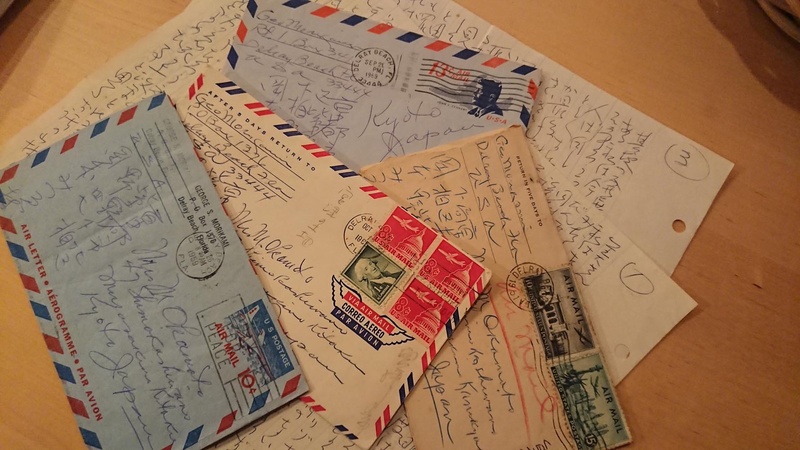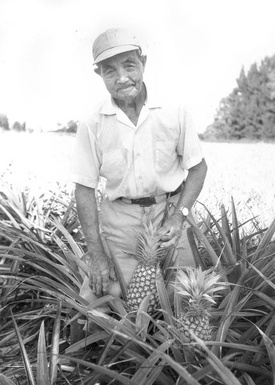Introduction: Yamato Colony and Morikami Sukeji
At the beginning of the 20th century, Japanese people began settling in Florida, located in the southern part of the east coast of the United States. In South Florida, where there was not even a trace of Japanese people, a "Japanese village" was established as the "Yamato Colony." In this village, mainly intellectuals and wealthy people, they started growing vegetables and fruit. However, they could not continue due to the harsh natural conditions, and disappeared before the war.
Among them, there was one man who remained until the end. His name was Morikami Sukeji. He donated the vast land he owned to the local area during his lifetime. This land later became the basis for the creation of The Morikami Museum & Japanese Gardens, a facility that introduces Japanese gardens and Japanese culture.
Sukeji, who remained single throughout his life and never returned to Japan, sent many letters to relatives and acquaintances in Japan during his lifetime. He exchanged letters particularly frequently with the wife and daughters of his younger brother, who died during the war. In his letters, he poured out his innermost thoughts about daily life, Japan and America, and, at times, longing for home to those he had come to regard as if they were his own family.
From this vast collection of letters, I would like to reconstruct and introduce the letters written after the war based on historical facts, in order to trace the life and longing for home of one Issei Japanese American. Before that, however, let me give a brief explanation of the colony and Sukeji.
The Yamato Colony was established in Boca Raton in southern Florida at the suggestion of Sakai Joh, a native of Miyazu City, Kyoto Prefecture, who was studying abroad at New York University at the time, as the development of Florida, which began at the end of the 19th century, progressed. Japanese people from around Miyazu and Japanese volunteers living in the United States participated, and a total of about 140 people worked in the area growing vegetables such as pineapples and tomatoes. However, the colony was disbanded before the war, and only a few people, including Morikami Sukeji, remained.
Morikami Sukeji was born on November 5, 1886 (Meiji 19) in Miyazu City, known for Amanohashidate. He borrowed travel expenses and other funds from Sakai's brother-in-law, Oki Mitsusaburo, who was also a sponsor of the colony, and settled there as a farmer, with the promise that he would receive a bonus if he worked there for three years. However, Oki died shortly thereafter, breaking the promise. From then on, Sukeji grew and sold pineapples and vegetables, while gradually buying up land. Just when he thought he had made a large fortune, he would go bankrupt or fall seriously ill. He lived an extremely frugal life, living in a trailer house in his later years. He passed away on February 29, 1976, at the age of 79.
The remaining letters date back to 1950. Mitsue Okamoto, the wife of Sukeji's younger brother Yoneji, who died during the war, had two sons and two daughters, and the letters were sent to Mitsue and her two daughters until just before Sukeji's death. In addition, some letters sent to other relatives remain.
Reference: "Yamato Colony: The Men Who Left Japan in Florida"
(Written by Ryusuke Kawai, Shunposha)
* * * * *
Episode 1: 1906: A solo journey of 8,000 ri
May 1950 (Showa 25), To Mitsue Okamoto
I have just come home from town, just after nine o'clock in the evening, and I shall write to you.
Today, I was busy picking eggplants with three black guys all day. We shipped nearly 100 boxes, weighing about 500 jin (approximately 300 kg), by train and truck to a market in the northern part of the United States. The train runs on the long Florida East Railway that runs along the Pacific coast of Florida. The market price is not very good at the moment.
It's starting to feel like summer in Florida. The indoor temperature is close to 90 degrees Fahrenheit (32 degrees Celsius). However, it drops to about 75 degrees Celsius (24 degrees Celsius) at night. Although the temperature is high, it's not continental heat, and a cool breeze blows from the Atlantic Ocean throughout the day and night, so I work almost naked and without a hat all day.
I've gone off on a tangent. I haven't spoken or written Japanese for a long time, so it's hard for me to write you a letter. I'm sure it's hard to read. I'll have some free time in about two weeks, so I'll slowly tell you about my life's confessions.
It's already May again. Thinking back, I arrived here at 9:15pm on May 4th, 1906. 45 years seems like a long time, but it was a solo journey of 8,000 ri (approximately 30,000 km) where I didn't know what to see or hear, and couldn't speak a word. When I think back to that time, I am overcome with emotion.
Things have become unsettling again recently. It seems as if war is about to break out in the United States. I worry about Japan's position if World War III breaks out. I hope we can invite you to our country. It won't be long before we, our compatriots in the United States, will be granted the right to naturalize. Then everything will become easier.
I have ordered the items you requested from a reputable mail order house in Chicago.
(Titles omitted, * indicates notes by the author)
© 2019 Ryusuke Kawai








